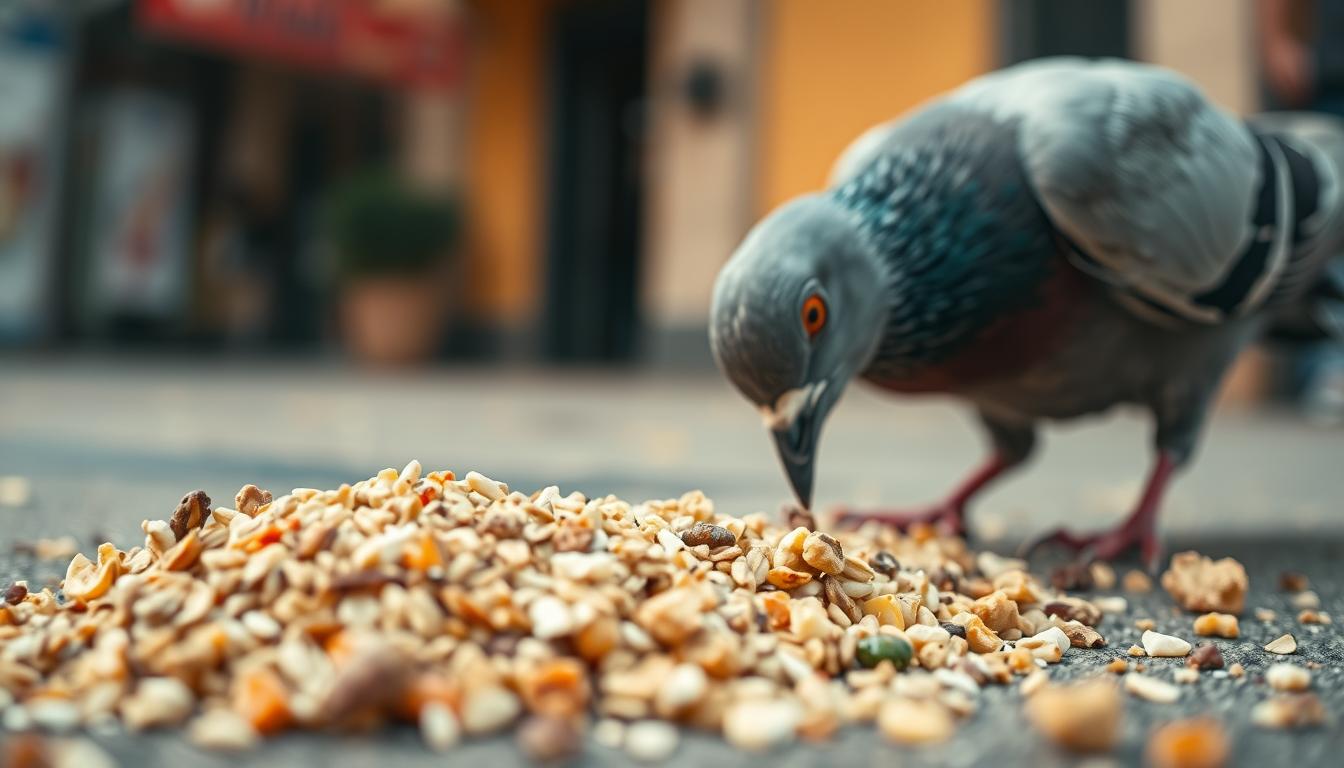Curious about whether dogs can eat Fig Newtons safely? While fresh figs might provide some health benefits in moderation, processed snacks like Fig Newtons come with potential dangers for your pup.
Unlike natural figs, Fig Newtons contain high amounts of sugar and other additives that can contribute to dental problems, obesity, and even more serious health concerns. Even small portions can have negative effects if not carefully monitored.
Understanding the risks and benefits is crucial before offering any new treat to your dog. Always consult your veterinarian before making changes to your pet’s diet.
In this article, we’ll dive into whether Fig Newtons are safe for dogs, the potential risks involved, and what healthier alternatives you can consider.
Table of Contents
Understanding Figs and Their Effects on Dogs
Figs can be a part of your dog’s diet, but it’s important to understand the differences between fresh and processed varieties. Fresh figs offer several health benefits, while dried figs and other parts of the fig plant can pose risks.
Nutritional Benefits of Fresh Figs
Fresh figs are rich in essential nutrients like fiber, vitamin A, potassium, and magnesium. These nutrients support your dog’s digestive health and overall well-being. Fiber, for instance, aids digestion, while potassium helps maintain healthy blood pressure. Fresh figs also contain antioxidants that can boost your dog’s immune system and protect against oxidative stress.
Dangers of Dried Figs
Dried figs, however, are highly concentrated in sugar, making them unsuitable for dogs. Excessive sugar consumption can lead to weight gain, dental issues, and other health problems. If you’re considering figs for your dog, fresh options are always the better choice.
Risks from Other Parts of the Fig Plant
Beyond the fruit itself, other parts of the fig plant, such as the leaves and branches, contain toxic compounds that can harm your dog. Ingesting these parts can cause symptoms like drooling, skin irritation, and stomach upset. It’s crucial to keep these parts out of your dog’s reach.
If you decide to introduce figs into your dog’s diet, opt for fresh, ripe figs in small portions. Always monitor your dog’s reaction and consult your veterinarian for personalized advice. Remember, moderation is key to ensuring your pet’s health and safety.
Can Dogs Eat Fig Newtons? The Risks Explained
Fig Newtons, while a tasty treat for humans, pose significant risks to your dog’s health. These processed snacks are far from a harmless reward for your pet.
High Sugar Content and Added Sugars
Fig Newtons contain high amounts of added sugars, similar to candy. A single serving can account for nearly half of the daily recommended sugar intake for humans, making them unsuitable for dogs. This excessive sugar can lead to dental problems and weight gain in your pet.
Potential Health Issues in Dogs
Beyond dental issues, the high sugar content in Fig Newtons can contribute to obesity and other health problems. Processed ingredients beyond just sugar also add to the risk, potentially causing digestive upset in dogs.
Impact on Dental Health and Weight
The sugar in Fig Newtons can lead to dental cavities and promote unhealthy weight gain. It’s crucial to monitor your dog’s diet and avoid such high-sugar treats to prevent long-term health issues.

If you suspect your dog has ingested Fig Newtons, watch for symptoms like stomach upset. Always consult your veterinarian before introducing new foods to your dog’s diet to ensure their health and safety.
Feeding Figs Safely: Tips for Moderation and Monitoring
When it comes to sharing treats with your pet, it’s important to approach with care. Figs can be a healthy option for your dog, but only when served correctly and in the right amounts.
Proper Serving Sizes for Different Dog Breeds
Larger breeds can enjoy one or two small figs, while smaller dogs should stick to a tiny piece. Always chop fresh figs into bite-sized portions to prevent choking hazards.
How to Introduce Figs into Your Dog’s Diet
Start by adding a small amount of chopped fig to their meal. Monitor your dog’s reaction closely. If any discomfort occurs, consult your vet immediately. Tools like puzzle feeders can make treat time both fun and safe.

Moderation is key. Treats should not make up more than 10% of your dog’s daily calories. Always prioritize your pet’s health and safety with mindful feeding practices.
Conclusion
When considering treats for your pet, it’s crucial to weigh the benefits and risks carefully. Fresh figs can offer nutritional value, but only when served in small, controlled amounts. Processed snacks like Fig Newtons, however, are high in sugar and pose significant health risks to your dog.
Moderation is key. For dogs, fresh figs should be limited to one or two per week, depending on size. Overfeeding can lead to digestive issues like diarrhea or vomiting. Always introduce new foods gradually and monitor your dog’s reaction closely.
Before making any changes to your dog’s diet, consult with your veterinarian. They can provide personalized advice based on your pet’s specific needs and health conditions. Remember, your dog’s well-being should always come first.
In conclusion, while fresh figs can be a healthy, occasional snack for dogs, processed treats like Fig Newtons should be avoided due to their high sugar content. By practicing moderation and seeking professional guidance, you can help ensure your pet enjoys treats safely and responsibly.
FAQ
Are figs safe for dogs to consume?
Fresh figs can be safe for dogs in small amounts. They provide potassium and fiber, which may offer health benefits. However, overconsumption can lead to stomach issues due to their high sugar content.
What are the risks of feeding Fig Newtons to dogs?
Fig Newtons contain high sugar levels and added sugars, which can harm your dog’s health. They may cause weight gain, dental problems, and other health issues if fed regularly or in large amounts.
How do I introduce figs into my dog’s diet safely?
Start by offering a small, ripe fig as an occasional treat. Monitor your dog’s reaction and consult your veterinarian before making figs a regular part of their diet. Always remove seeds and skin, as they can cause digestive upset.
Why is it important to consult a veterinarian before feeding figs?
Your vet can provide personalized advice based on your dog’s specific health conditions, breed, and dietary needs. They can help determine a safe serving size and ensure figs won’t interfere with your dog’s balanced diet.
Can figs cause any health issues in dogs?
Yes, figs can cause digestive upset if eaten in excess. Dried figs, in particular, have higher sugar content and may lead to diarrhea or vomiting. Always feed fresh figs in moderation and avoid other parts of the fig plant, as they can be toxic.
How much fig can I safely give my dog?
The amount depends on your dog’s size and health. Generally, a small piece of fresh fig (about 1-2 teaspoons for small breeds and 1-2 tablespoons for larger breeds) is considered safe. Exceeding this may lead to an upset stomach.
Are there any benefits to feeding figs to dogs?
Figs are rich in fiber and potassium, which can support healthy digestion and muscle function in dogs. However, these benefits are best achieved through moderation and as part of a balanced diet.
Can figs be a part of my dog’s regular diet?
Figs should not replace your dog’s regular meals. They are best used as an occasional treat. Overfeeding can lead to an imbalanced diet and potential health problems, such as obesity or digestive issues.
What should I do if my dog eats too many figs?
If your dog consumes a large amount of figs, monitor their behavior closely. Signs of illness, such as vomiting or diarrhea, may occur. Contact your veterinarian immediately if you notice any adverse reactions.
Are there alternatives to figs for a healthy dog treat?
Yes, consider offering your dog other fruits like blueberries, strawberries, or bananas. These are lower in sugar and can be safer options for your pet. Always introduce new foods in small amounts and under veterinary guidance.
Source Links
- Can Dogs Eat Figs? – https://www.petmd.com/dog/nutrition/can-dogs-eat-figs
- Can Dogs Eat Fig Newtons? Health & Safety Facts | Hepper – https://www.hepper.com/can-dogs-eat-fig-newtons/
- Sundays | Can Dogs Eat Figs? How This Fruit Can Benefit Your Pup – https://sundaysfordogs.com/blog/can-dogs-eat-figs-how-this-fruit-can-benefit-your-pup?srsltid=AfmBOorCy1tRWYfRsHRa3NzkUQSZkuf8D8ePJP9zj0MKQyV6d0wYVi_b
- 14 Fig Newtons Myths Debunked – Food Republic – https://www.foodrepublic.com/1642272/fig-newtons-myths-debunked/
- What You’re Eating When You Bite Into A Fig Newton And Is It Really Healthy? – Mashed – https://www.mashed.com/1584089/whats-in-a-fig-newton-is-it-healthy/
- Which Human foods are safe for dogs? – Doggie Food Items – https://doggiefooditems.com/which-human-foods-are-safe-for-dogs/
- 10 Foods To Avoid With Diverticulitis – https://instacare.pk/blog/foods-to-avoid-with-diverticulitis
- Nutrition and Diagnosis-Related Care (Nutrition and Diagnosis-Related Care ( Escott-Stump)) by Sylvia Escott-Stump MA RD LDN (z-lib.org) – https://www.yumpu.com/en/document/view/65226736/nutrition-and-diagnosis-related-care-nutrition-and-diagnosis-related-care-escott-stump-by-sylvia-escott-stump-ma-rd-ldn-z-liborg
- Hangman game help – https://gist.github.com/tomophilia/4cd6f5ce12b3c53bdafb353792423abf
- Can Dogs Eat Figs? – Animalso – https://animalso.com/can-dogs-eat-figs/
- Can Dogs Eat Fig Rolls? Unveiling the Truth – WeWantDogs – https://www.wewantdogs.co.uk/can-dogs-eat-fig-rolls/
- Can Dogs Eat Figs? Safety Tips & Benefits – https://blog.tryfi.com/can-dogs-eat-figs/




